
Topics
Footage of the devastation after the U.S. bombings of Hiroshima and Nagasaki that was commissioned by the US occupying forces was suppressed for decades. Erik Barnouw reads the words of the Japanese filmmaker Akira Iwasaki.
We turn to footage that was taken after the bombs were dropped. A Japanese filmmaker, Akira Iwasaki, went to Hiroshima and Nagasaki to film the aftermath of the bombings. The U.S military at first forced him to halt filming but then ordered him to continue.
More than twenty years later, Erik Barnouw received a letter from an environmentalist named Lucy Lemann alerting him to the existence of this footage. Barnouw obtained the footage from the National Archive and edited the footage down to sixteen minutes. We play an excerpt of that piece. The images are graphic and horrifying. Our radio listeners can go to our website to see some of those images. The film is narrated by Kazuko Oshima and Paul Ronder.
- Erik Barnouw was a professor at Columbia University and first film curator at the Library of Congress.
Related link:
Transcript
AMY GOODMAN: In this segment we turn to footage that was taken after the atomic bombs were dropped. A Japanese filmmaker team went to Hiroshima, Nagasaki to film the aftermath of the bombings. The U.S. military at first forced them to halt, then ordered them to continue, but we’ll let Erik Barnouw describe it, the famed documentarian who edited the film decades later after it was declassified. He reads from his office at Columbia University. This is the late Erik Barnouw, the words of the Japanese filmmaker, Akira Iwasaki.
ERIK BARNOUW: Akira Iwasaki writes, “In the middle of the shooting, one of my cameramen was arrested in Nagasaki by American military police. I was summoned to general headquarters and told to discontinue the shooting. However,” he says, he made arguments wherever he could. “Then,” he says, “came the group of the strategic bombing survey from Washington, and they wanted a film on Hiroshima and Nagasaki; therefore, the U.S. Army wanted to use my film and changed its mind. Now they allowed or rather ordered me to continue and complete the film.”
AMY GOODMAN: The Japanese film crew then began to edit their footage. Erik Barnouw continues.
ERIK BARNOUW: When this compilation had reached a length of approximately two hours and 40 minutes, the saga entered a new stage. Suddenly, all of the material, negative, master positive, boot prints and paper records relating to it, were all suddenly taken over by the American military, shipped off to Washington and declared secret, and all of this material disappeared from view for almost a quarter of a century. Very few people in government and almost nobody in the film industry was aware of — was even aware of its existence.
JUAN GONZALEZ: More than 20 years later, Erik Barnouw received a letter from an environmentalist named Lucy Lemann, alerting him to the existence of this footage. Barnouw obtained the footage from the National Archive and edited the footage down to 16 minutes. This is an excerpt of that piece. For those who are watching on television, the images are graphic and horrifying. Our radio listeners can go to our website to see some of those images. The film is narrated by Kazuko Oshima and Paul Ronder. Here is an excerpt from Hiroshima Nagasaki, 1945.
NARRATOR: Hiroshima, on that day, there was no panic, only ghastly stillness, the quiet of death. People moved slowly along the roads like ghosts covered with dust and ash who fell dead as they walked. By the river people were bleeding from their faces or hands and died without weeping. People trapped under fallen houses called patiently, meekly, “Help, if I may ask.” In Hiroshima on that day, half the doctors were killed. At the hospitals between three and ten thousand people came each day for help, and each day, 2,000 of them died. They were buried together, because there were too many to bury separately.
AMY GOODMAN: That was an excerpt of the film, Hiroshima Nagasaki, 1945, produced by the late renowned documentarian, Erik Barnouw.

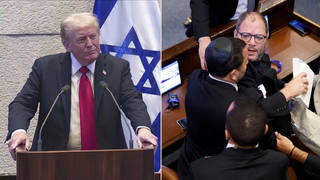
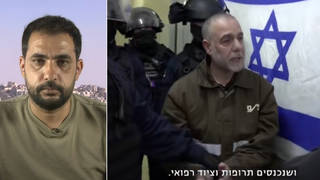
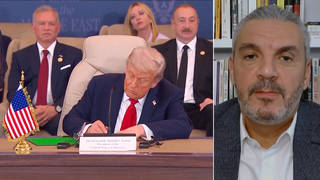
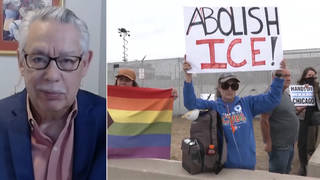





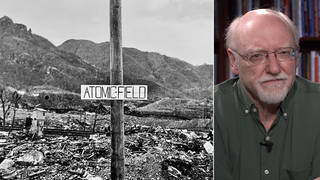
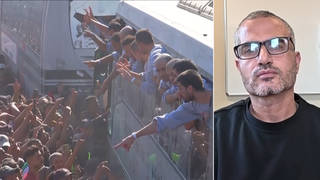
Media Options